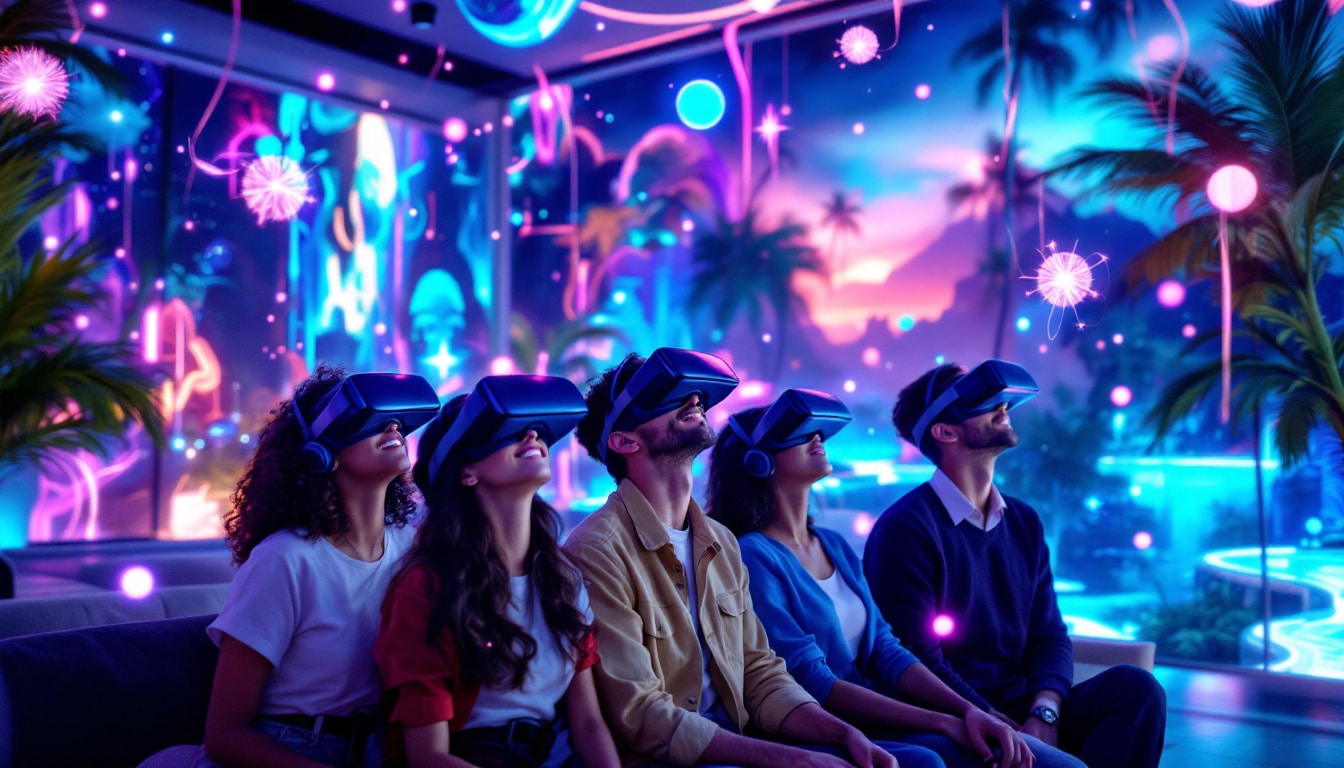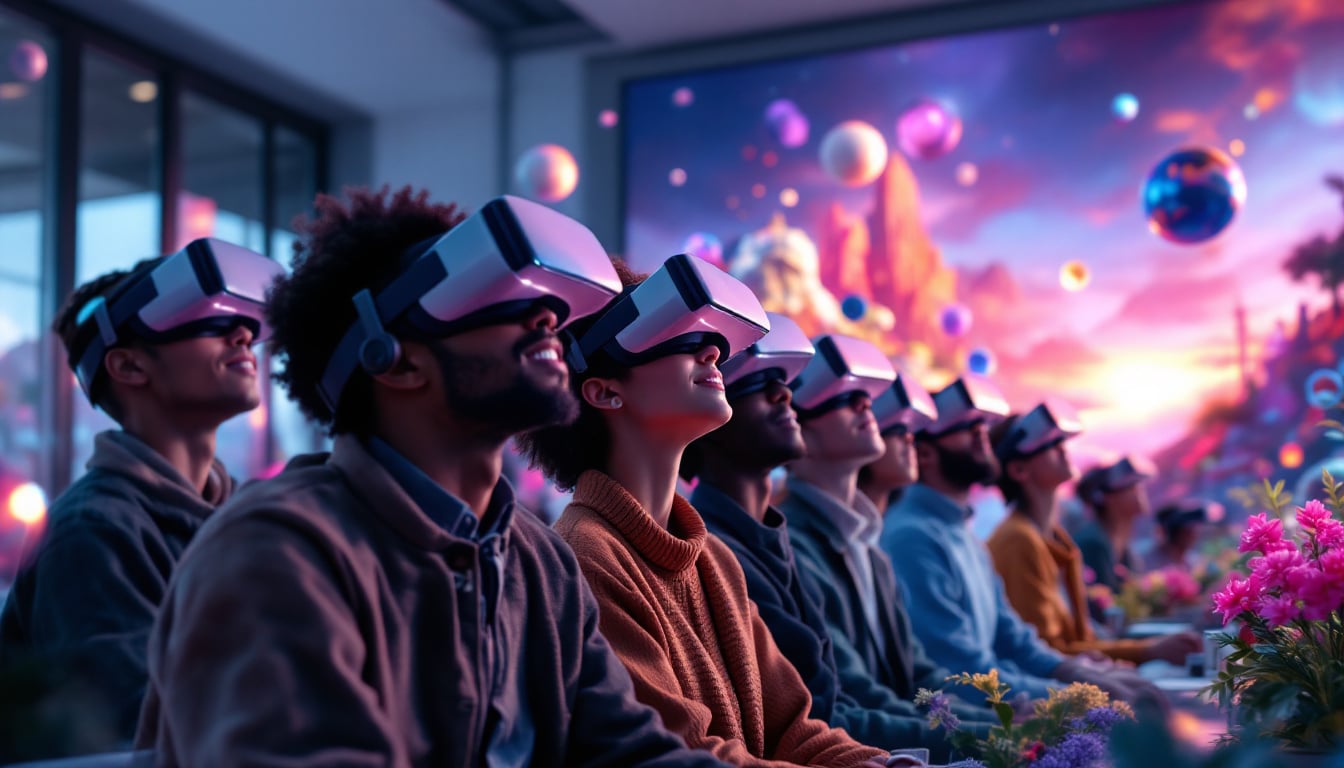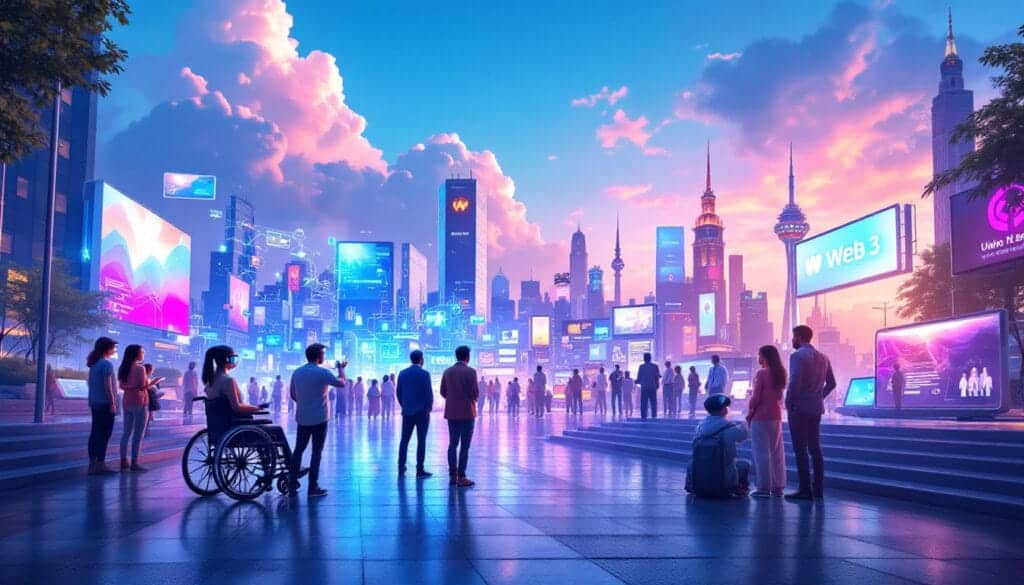Virtual reality is a fascinating innovation that transforms our interaction with the digital world. By using VR headsets, this technology immerses users in digitally created environments, whether they are replicas of the real world or from the imagination. Whether for entertainment, education, or even medicine, virtual reality continues to captivate and revolutionize various fields with its immersive and engaging experiences.
Virtual Reality (VR): Virtual reality is an immersive technology that allows a person to immerse themselves in a digital world, whether it is a reproduction of the real world or a completely imaginary universe. With the help of sophisticated headsets, users are transported into 3D environments where their senses, such as sight, hearing, and sometimes even touch, are awakened to create an immersive and realistic experience.
Virtual Reality Headset: The VR headset is the central element of any virtual reality experience. This device, which covers the user’s head and eyes, projects interactive images in 3D and high resolution in front of the eyes for total immersion. Several brands and models of headsets exist on the market. For example, the Meta Quest 3S is often mentioned as an ideal option for those who want to explore VR.
Immersive Environments: These environments offer an illusion of physical presence in a virtual universe. Thanks to multimedia and immersive technologies, the user can explore and interact with their virtual surroundings, whether it is a futuristic classroom for learning or a battlefield for a video game.
Applications of Virtual Reality: Virtual reality is not limited to the world of video games. It finds varied applications in fields such as education, medicine, and entertainment. For example, modules like “Lost Worlds” allow users to relive major milestones in Earth’s evolution through an immersive and educational experience, while surgeons use VR to refine their skills and perform complex operations with greater precision.
Technology and Innovation: VR continues to progress due to relentless innovations in hardware and software. The RTX 5090, for instance, offers exceptional performance in virtual reality games like Fallout and Flight Simulator. These advancements testify to the tremendous potential of VR to enhance our digital experiences and transform our daily lives.
Augmented Reality vs Virtual Reality: Although often confused with augmented reality, virtual reality is a distinct technology. While VR fully immerses the user in a virtual environment, augmented reality overlays digital elements onto the real world. These two technologies are complementary and open new perspectives for education, industry, and much more.
Meanings and Implications: The meaning of virtual reality varies from different perspectives. For some, it is a pathway to more immersive gaming experiences; for others, it is a potentially revolutionary business transformation tool, allowing industries to explore new business models and gain a competitive edge.
Industry 4.0 and Virtual Reality: With the emergence of the Industry 4.0 concept, virtual reality is establishing itself as a key tool for optimizing industrial processes. According to estimates, the Industry 4.0 market is expected to grow significantly by 2032, indicating an increased adoption of immersive technologies in sectors ranging from electronics to automotive manufacturing.

Table des matières
ToggleFrequently Asked Questions: Discover Virtual Reality
Q:
What is virtual reality (VR)?
A:
Virtual reality is an immersive technology that plunges a user into a completely artificial environment, generally in three dimensions (3D).
Q:
How does virtual reality work?
A:
VR uses a set of technologies that combine sophisticated hardware and advanced software to create immersive experiences that fool our senses. The heart of this experience is the VR headset.
Q:
What are the key components of a virtual reality experience?
A:
The key components include a VR headset that simulates sight, headphones for hearing, and sometimes motion sensors and controllers for touch, thereby increasing immersion.
Q:
What is virtual reality used for?
A:
Virtual reality is used for several purposes, including entertainment through games, education with immersive simulations, and commercial applications for a competitive advantage.
Q:
What is the difference between virtual reality and augmented reality?
A:
Virtual reality creates an entirely digital environment while augmented reality overlays digital elements onto the real world.
Q:
What are the advantages of virtual reality in education?
A:
It allows immersion in interactive learning environments, which can enrich the educational experience by making learning more engaging.
Q:
How is virtual reality used in industry?
A:
It is utilized for training, product design, prototype visualization, and marketing, thus promoting the optimization of industrial processes.
Q:
What are the current challenges of virtual reality?
A:
Challenges include the high cost of equipment, the need for powerful computer hardware, and the necessity to improve accessibility for widespread adoption.





